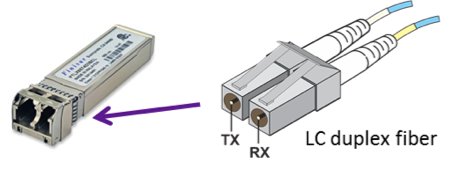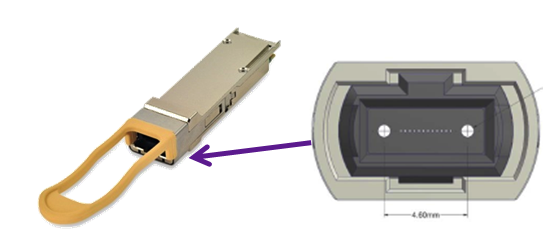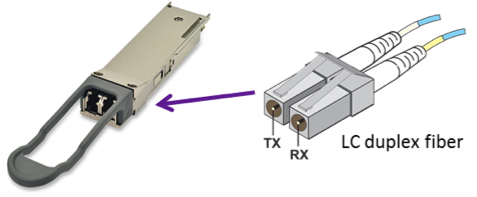Using SWDM to Extend the Useful Life of the Data Center Fiber Infrastructure
Today’s large data centers are primarily architected around 10 Gigabit Ethernet. Indeed, the 10GE has become the “unit of granularity” for interconnections between switches, routers, and server NICs. For this reason, 10G SFP+ has become the dominant form factor and duplex LC-connectorized multimode fiber (MMF) has become the fiber infrastructure of choice.

A typical fiber connection traverses multiple connector-changing cassettes and patch panels. Individual duplex LC connections are usually aggregated into ribbon trunk fibers in these cassettes, as illustrated in Figure 2.

As the need for higher bandwidths in data center interconnections has intensified, a popular solution has been the use of parallel optics. These transceiver modules combine multiple 10G signals paths into one unified 40G or 100G module. This has led to the increasing popularity of the QSFP+, CXP, and CFP/CFP2/CFP4 form factors.

When data centers wish to migrate from 10G to 40G, they must therefore make costly changes to their fiber infrastructure:
- Replace the duplex LC patch cords with octal MPO patch cords
- Quadruple the amount of trunk fiber

This deployment of 40G QSFP+ SR4 began in high volume in early 2013 for cloud data centers, but many large enterprise data centers are just beginning this transition, and they are finding the upgrade fiber costs to be significant. Not only are MPO patch cords much more costly than duplex LC, and of course the trunk fiber costs are quadrupled, but there is also a significant operational expenditure involved in the physical deployment of this new fiber.
SWDM allows upgrades to 40G (and to 100G) to be much simpler, because it can utilize the exact same fiber infrastructure already deployed for 10G SFP+. The optical modules have only duplex LC ports, and those ports carry the entire 40G data stream (and in the future, 100G).


SWDM technology therefore allows data center operators to upgrade from existing 10G links to 40G and 100G without paying the CapEx or OpEx associated with upgrading the fiber infrastructure. When the network gear is upgraded, SWDM modules can be plugged into standard QSFP slots, and the duplex MMF fiber formerly used for 10G SFP+ connections can be re-used.
